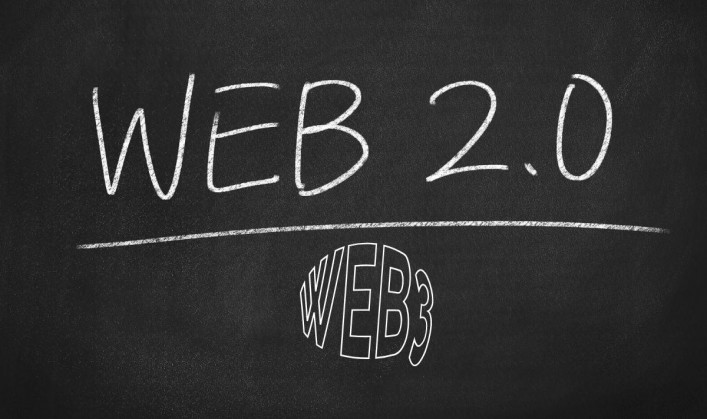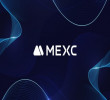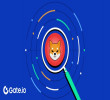7 November 2025
An In-Depth Comparison of Web2 and Web3
Throughout time, advancements in technology have influenced nearly all industries. The advent of the internet was a groundbreaking technical innovation that has far-reaching consequences. We were lucky by being born into this age and see firsthand everything that the internet has to offer. There have been several iterations of the World Wide Web leading up to the present day, which we will discuss. Web1, commonly referred to as the Internet, came initially; it is well-known and well-praised. Second, the consumer-generated internet, or Web2, emerged and eventually caught up with early social media's precursor signs. In today's world, everyone seems to be discussing Web3, often recognized as Web 3.0.
Also Read: Cardano And Solana Benefit From Rising NFT Demand
What is Web2?
Nowadays, most of us are using Web2, the second iteration of the Website. Web2 expanded the possibilities for interaction present on the Web beyond what was possible in the first iteration of the internet. Among the most distinguishing innovations of Web2 was the advent of Cascading Style Sheets (CSS). CSS enabled programmers to construct intricate graphic patterns which altered the manner in which Websites appeared. Thus, sites like Facebook, Instagram, Twitter, as well as LinkedIn mushroomed in popularity. Users of each of these services create an account by providing their email address and choosing a password after completing a brief registration process. Users may create their own material and share it on these platforms for others to enjoy and engage with. Nonetheless, despite their seeming decentralization, large businesses like Facebook, Instagram, Twitter, and LinkedIn regulate and run these networks.
Also Read: How To Combine Web3 With Telecoms?
What is Web3?
Web 3.0, often known as the "read-write-execute Web," is the next iteration of the World Wide Web. The introduction of adaptive applications, M2M interaction, as well as collaborative solutions marked the beginning of this trend. In addition, it explains how Websites have changed through time as well as how they may now communicate with one other in several ways. Services display varying perspectives on the same data or Web since data is not owned but shared. Web 3.0, also known as the Semantic Web, proposes a network in which computers can understand language as well as humans can, thanks to technologies such as artificial intelligence and machine learning. Also, the data that keeps people linked is revealed via semantic metadata. As a result, the degree of connection enjoyed by users increases as more data is made accessible to them.
Difference Between Web2 and Web3
Following are the comparison on Web2 and Web3 that you should understand about this present and future of the internet:
1. Technology
The layout technologies CSS and Ajax that define Web2 allow for further flexible goods and services to be delivered via the use of interpersonal structures. Although using blockchains like Ethereum as well as Solana, Web3 still relies on conventional design technology.
2. Focus
Web2 places a greater emphasis on user participation as well as the growth of online communities. Web3 places a greater emphasis on linguistic training and decentralization, as well as on the enhancement of the consumers themselves.
3. Governance
Apps, cloud storage, as well as platform infrastructures are managed and controlled by centralized authorities in the Web2 architecture. The management of goods and services is intended to take place in Web3 via a P2P and decentralized consensus mechanism.
4. Tweets
Twitter has the ability to restrict any account or tweet in Web2. Tweets sent over Web3 would be immune to censorship since the platform's management would've been decentralized.
5. Censorship
When it comes to Web2 goods and services, centralized organizations must follow the rules of the countries in which they are based. The above results in stringent censoring rules being part of their service agreement. Because of this, deplatforming occurs often. As Web3 is distributed, it is difficult to control content.
6. Servers
When it comes to applications that are used in the freelance industry, Web2 servers might fall down, which could have a detrimental impact on staff revenue. Since Ethereum is a decentralized system consisting of approximately thousands or even millions of machines, Web3 servers would continue to function normally.
7. Ownership & Sovereignty
As was discussed before, Web 2.0 platforms capitalize on your private information, engagement, as well as output in order to earn revenue. With Web3, on the other hand, you are the sole owner of each and every one of your personal data, as well as your activity and content, and you have the ability to utilize this information to make a gain for yourself.
The Bottomline
Web2 is a popular new internet standard. Those that provide services in return for users' private information rule the market. Conversely, blockchain-based decentralized apps are what the term " Web3" alludes to. These applications make it easy for everyone to take part, without requiring them to sell their personal information.
Disclaimer: The author’s thoughts and comments are solely for educational reasons and informative purposes only. They do not represent financial, investment, or other advice.






